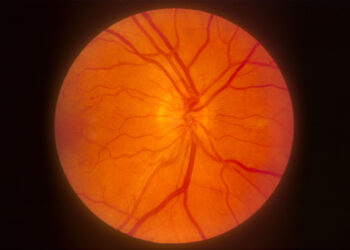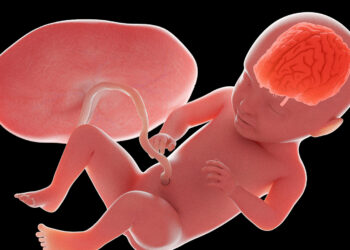SAN FRANCISCO — Frailty is hard to define and hard to distinguish from the effects of illness, injury, and medical interventions, but the frailty of patients in the intensive care unit (ICU) can have profound effects on outcomes, including the risk for mortality.
In a scientific symposium on frailty in the ICU, presented during the American Thoracic Society (ATS) 2025 International Conference, researchers outlined both the challenges of assessing frailty in the ICU and the effects of frailty on patients in the ICU and after discharge.
“I think the ICU is a unique rubric to understand the role of frailty, stress, and maladaptive physiologic responses in mediating short- and long-term outcomes,” said Aluko Akini Hope, MD, from Oregon Health Sciences University in Portland, Oregon.
Despite some unique challenges in the ICU setting, frailty can be measured using approaches that consider both frailty phenotype and cumulative deficits, Hope said.
He defined physical frailty as “a clinical state in which the patient has reduced functional reserve and increased vulnerability to stressors due to maladaptive changes across multiple physiologic systems.”
Although definitions and means of assessing frailty vary, they can be roughly grouped into two main conceptual models.
The phenotypic model relies on physical factors such as recent weight loss > 10 lbs, low grip strength, exhaustion, slow gait, and low physical activity.
The cumulative health deficit model can be summed up as “the more individuals have wrong, the more likely they are to be frail,” Hope said.
Multiple Assessment Tools
Frailty can be assessed with a variety of approaches, including the frailty index, which generates a score calculated by dividing the number of deficits a patient has by the total number of health variables considered. The assessment using this index can be reduced to approximately 30 items with good predictive validity, Hope said.
The predictive power of this model relies, however, on clinical documentation in the electronic health record and is subject to residual confounding.
In contrast to the frailty index, the Clinical Frailty Scales is based on clinical judgment of experienced clinicians to summarize the overall frailty or fitness level of older patients. The 9-point scale ranks patients from being “very fit” to terminally ill and is associated with both morbidity and mortality outcomes in ICUs.
This scale, widely used in ICUs in Canada for research purposes, has strong interrater reliability in ICU multidisciplinary teams, Hope commented.
The phenotypic approach may be more difficult than other measures to use in a critical care setting because it relies on physical aspects such as ability to rise from a chair, slow walking speed, low physical activity, and exhaustion. These measures all rely on patient or caregiver recall.
Performance measures to identify frailty include a sit-to-stand test, balance test, gait speed, and mobility stress testing, which may be appropriate in the post-ICU setting but can be hard to apply in a critical care unit.
Impact on Outcomes
Lauren Ferrante, MD, MHS, from the Yale School of Medicine in New Haven, Connecticut, noted that although the prevalence of frailty increases with age, from 3.2% in 65- to 70-year-olds to 25.7% in 85- to 89-year-olds in one study, many older adults are not frail, and making assumptions about frailty based only on appearance or immediate circumstances can result in either over- or undertreatment of patients.
However, it is identified “frailty is strongly associated with adverse ICU and hospital outcomes, including mortality,” she said.
In addition, frailty “is associated with worse patient-centered outcomes, including health-related quality-of-life and functional outcomes,” Ferrante said.
She summarized findings from the literature on the effects of frailty on outcomes. For example, in a study published this year in the Annals of Intensive Care, investigators looked at the impact of frailty and older age on weaning patients from invasive mechanical ventilation and found that the highest proportion of patients for whom weaning failed was in those patients who were deemed to be frail, and that frailty had more consistent effect on weaning duration and success rates than older age.
A separate study from the Canadian Critical Care Trials group, published in Intensive Care Medicine in 2024, found that frail patients were more likely than non-frail patients to experience ICU delirium and had higher in-hospital and 6-month mortality rates.
Ferrante and colleagues, Hope and colleagues, and others have also looked at frail patients in longitudinal and cohort studies and found that frailty is associated with post-ICU disabilities and poor functional outcomes.
In addition, patients who are frail have a 3.5-fold higher likelihood of new admissions to a nursing home after a critical illness than non-frail patients.
And as John Muscedere, MD, Queen’s University in Kingston, Ontario, Canada, and colleagues reported in a systematic review and meta-analysis, also presented at ATS 2025 International Conference, compared with non-frail patients, those who were frail had a more than twofold relative risk for in-hospital death, had a more than 2.5-fold relative risk for long-term mortality, and were significantly less likely to be discharged home.
“We should be thinking more about augmenting processes of care for frail ICU across the continuum to post-discharge care,” Ferrante said.
She recommend considering automated methods of ascertaining frailty such as the eFrailty Index in the Epic medical record system, which automatically generates a frailty index score from chart data and has the potential to be adapted for use in the ICU.
Clinicians should be cautioned, however, not to conflate automated measurements with severity of illness, which could yield false positive results, she emphasized.
A Confusing Entity
An ICU specialist who attended the session told Medscape Medical News that he wasn’t convinced that the research presented during the session fully addressed the problem of frailty in the ICU.
“I really worry when we think about frailty as a construct in the ICU that we end up putting the cart before the horse. It’s something that we know when we see it, but it’s very difficult to measure, and we’re talking about different things. When we say the word ‘frailty’ we’re not always talking about the same thing, and I definitely worry when we think about developing specific interventions, particularly around ICU patients,” said Jeremy Kahn, MD, MS, professor of critical care medicine and health policy and management at the University of Pittsburgh, Pittsburgh.
“If we don’t really understand what frailty is then we’re going to end up with a lot of negative studies that may be several different diseases that we’re conflating as one,” he said.
Asked by Medscape Medical News whether the idea of an automated frailty index had merit, he replied that “it’s definitely more objective, but then it does raise the question whether you’re measuring something new. We have lots of measures around comorbidities, we have age, which is very predictive, and not to say that frailty isn’t a real thing, but if we can’t measure it in a way differently from age or comorbidities, we’re just using the electronic health record.”
In the absence of an accurate objective measure of frailty, clinicians may be measuring things that they already know, such as comorbidities, or may be identifying patient populations that are diverse and may not be amenable to a single intervention, Kahn told Medscape Medical News.
Hope, Ferrante, and Kahn reported having no relevant financial disclosures.
Neil Osterweil, an award-winning medical journalist, is a long-standing and frequent contributor to Medscape Medical News.
Source link : https://www.medscape.com/viewarticle/frailty-icu-many-definitions-no-easy-solutions-2025a1000cwe?src=rss
Author :
Publish date : 2025-05-22 11:30:00
Copyright for syndicated content belongs to the linked Source.














